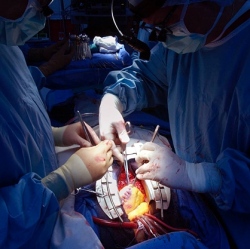
A kit of 3D-printed anatomical body parts could revolutionize medical education and training. The simple and cost-effective anatomical kit would dramatically improve trainee doctors’ knowledge and could even contribute to the development of new surgical treatments.
“Many medical schools report either a shortage of cadavers, or find their handling and storage too expensive as a result of strict regulations governing where cadavers can be dissected,” he said. “Without the ability to look inside the body and see the muscles, tendons, ligaments, and blood vessels, it’s incredibly hard for students to understand human anatomy. We believe our version, which looks just like the real thing, will make a huge difference.”
The 3D Printed Anatomy Series kit, to go on sale later this year, could have particular impact in developing countries where cadavers aren’t readily available, or are prohibited for cultural or religious reasons. After scanning real anatomical specimens with either a CT or surface laser scanner, the body parts are 3D printed either in a plaster-like powder or in plastic, resulting in high resolution, accurate color reproductions.
